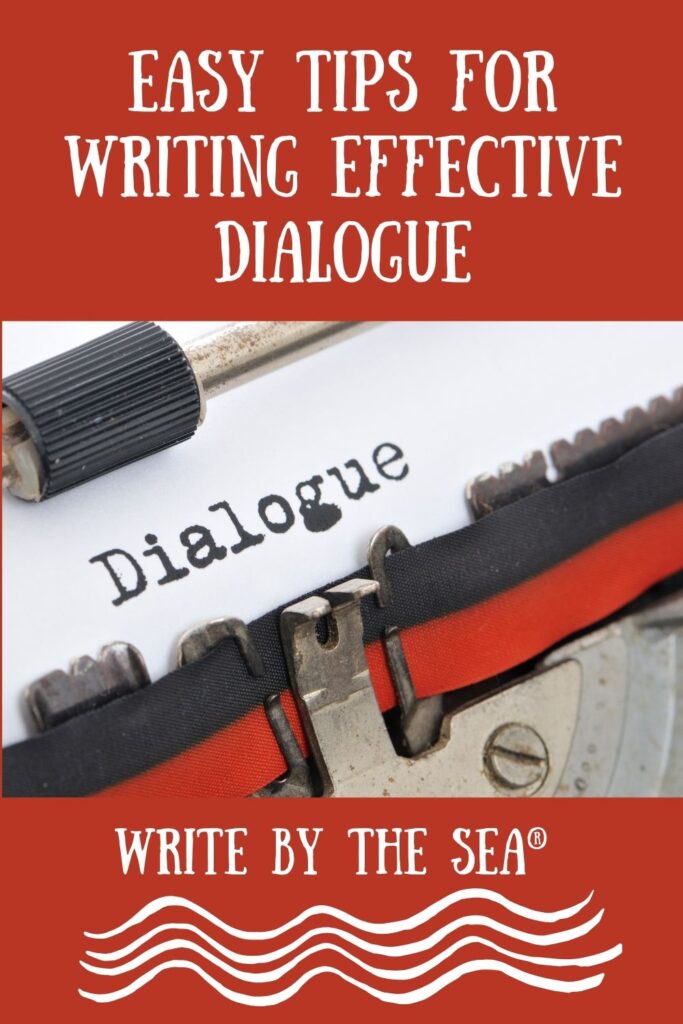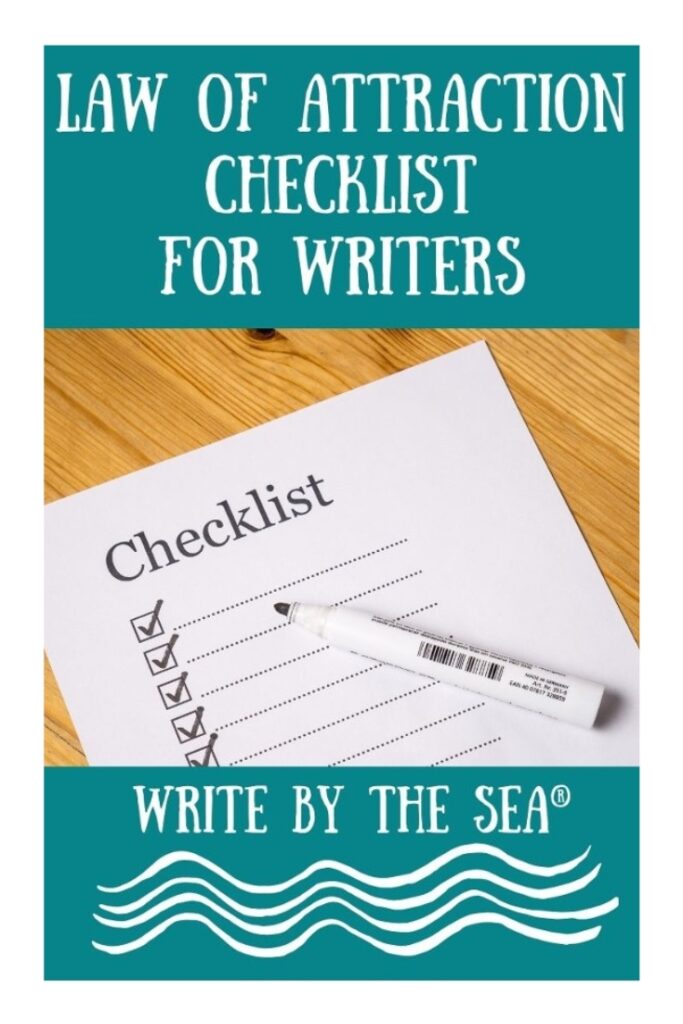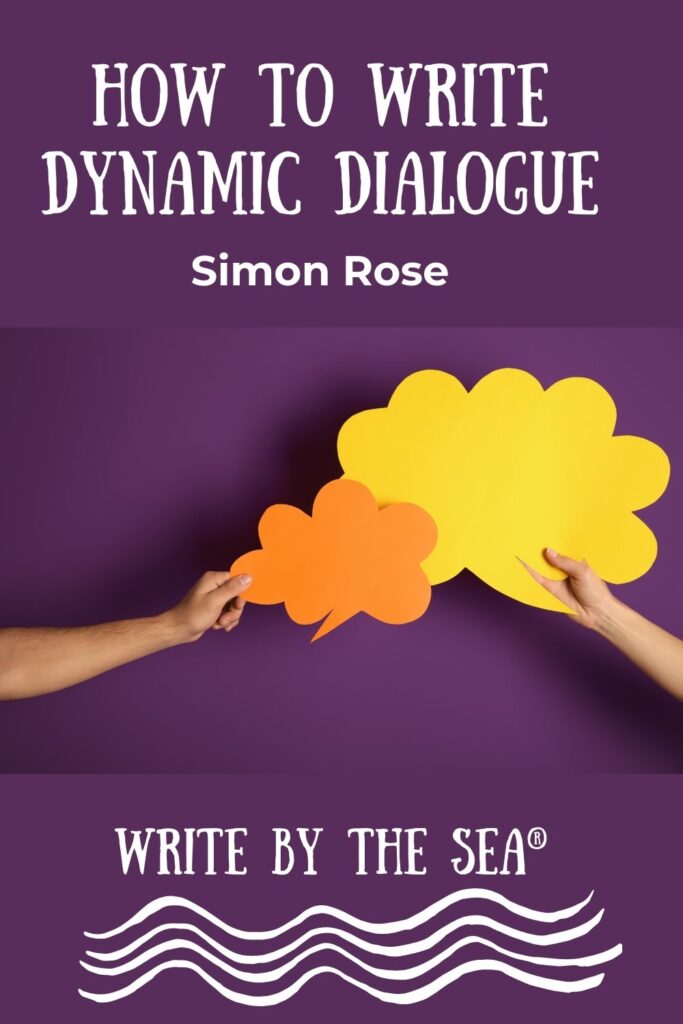
Dialogue is a big part of any novel or short story, but the dialogue must ring true and serve to move the story foreward in order for it to be effective.
Here are some simple tips for creating effective dialogue:
#1. Keep it Natural.
Write how people actually speak.
Avoid overly formal language unless the character requires it.
#2. Use Subtext.
Let characters imply things instead of saying everything outright.
This adds depth and intrigue.
#3. Be Concise.
Dialogue should be short and to the point.
Long-winded speeches can lose the reader’s interest.
#4. Show Character.
Use dialogue to reveal your characters’ personalities, backgrounds, and emotions.
#5. Add Conflict.
Dialogue should have tension or conflict to keep it interesting and dynamic.
#6. Vary Speech Patterns.
Give each character a unique way of speaking so your characters don’t all sound alike.
#7. Include Actions.
Break up dialogue with actions or descriptions to create a more vivid scene.
#8. Avoid Info Dumps.
Don’t use dialogue to dump a lot of information on the reader.
Spread out details naturally.
#9. Read Aloud.
Read your dialogue out loud to see if it sounds realistic and flows well.
#10. Edit Ruthlessly.
Trim unnecessary words or exchanges to keep the dialogue sharp and engaging.
Here are examples of effective dialogue from well-known novels, along with explanations of what makes each bit of dialogue effective:
#1. Pride and Prejudice by Jane Austen
Example:
Mr. Bennet: “An unhappy alternative is before you, Elizabeth. From this day you must be a stranger to one of your parents. Your mother will never see you again if you do not marry Mr. Collins, and I will never see you again if you do.”
Why it’s effective: This dialogue showcases Mr. Bennet’s dry wit and the conflicting pressures Elizabeth faces. It highlights character personality and the tension between societal expectations and personal desires.
#2. To Kill a Mockingbird by Harper Lee
Example:
Atticus Finch: “You never really understand a person until you consider things from his point of view… Until you climb into his skin and walk around in it.”
Why it’s effective: Atticus’s words convey a central theme of the novel—empathy and understanding. It’s clear, memorable, and reveals Atticus’s moral integrity and wisdom.
#3. The Catcher in the Rye by J.D. Salinger
Example:
Holden Caulfield: “People always clap for the wrong things.”
Why it’s effective: This line encapsulates Holden’s cynicism and alienation. The brevity and simplicity of the dialogue reflect Holden’s straightforward and jaded view of the world.
#4. The Great Gatsby by F. Scott Fitzgerald
Example:
Daisy Buchanan: “I hope she’ll be a fool—that’s the best thing a girl can be in this world, a beautiful little fool.”
Why it’s effective: Daisy’s statement is layered with irony and sadness, reflecting her own disillusionment with her life and the role of women in society. It reveals her inner turmoil and the social commentary embedded in the novel.
#5. Harry Potter and the Sorcerer’s Stone by J.K. Rowling
Example:
Hagrid: “You’re a wizard, Harry.”
Harry: “I’m a what?”
Why it’s effective: This simple exchange is pivotal in the story, marking the moment Harry’s life changes forever. It captures Harry’s disbelief and the revelation of his true identity, creating excitement and curiosity.
#6. 1984 by George Orwell
Example:
O’Brien: “If you want a picture of the future, imagine a boot stamping on a human face—forever.”
Why it’s effective: This dialogue is stark and chilling, effectively conveying the oppressive and hopeless nature of the dystopian world Orwell created. It’s memorable and powerfully disturbing.
Each of these examples uses dialogue to reveal character, advance the plot, and underscore themes, making the conversations impactful and resonant.
Click here to read more great tips for writing dialogue.
Find out why you should practice writing dialogue, here.



